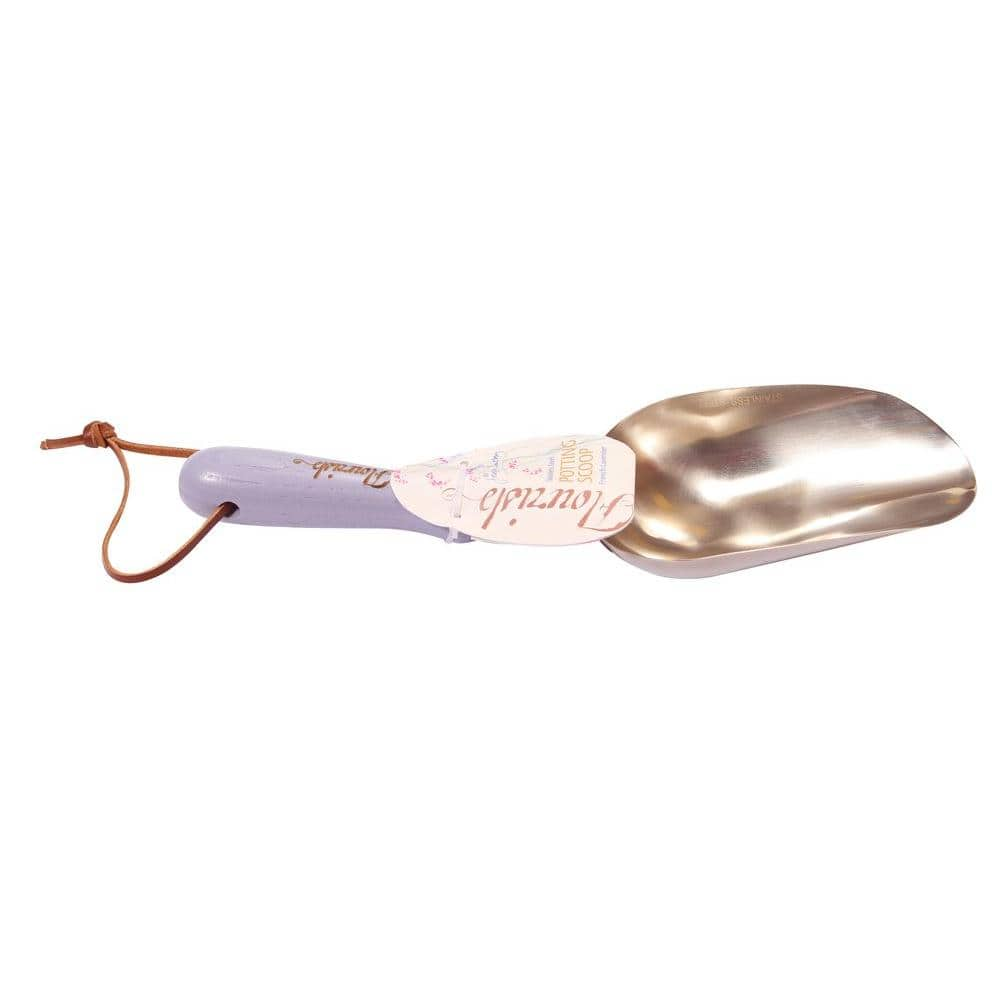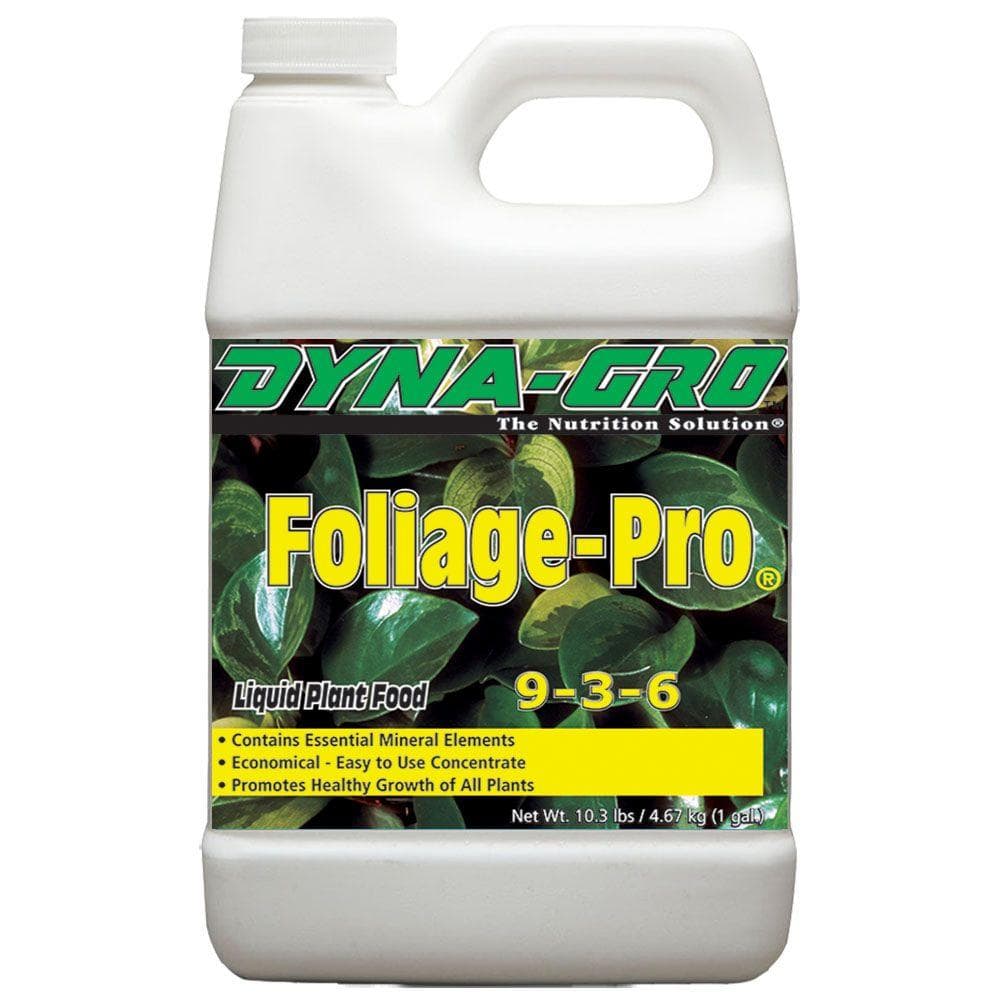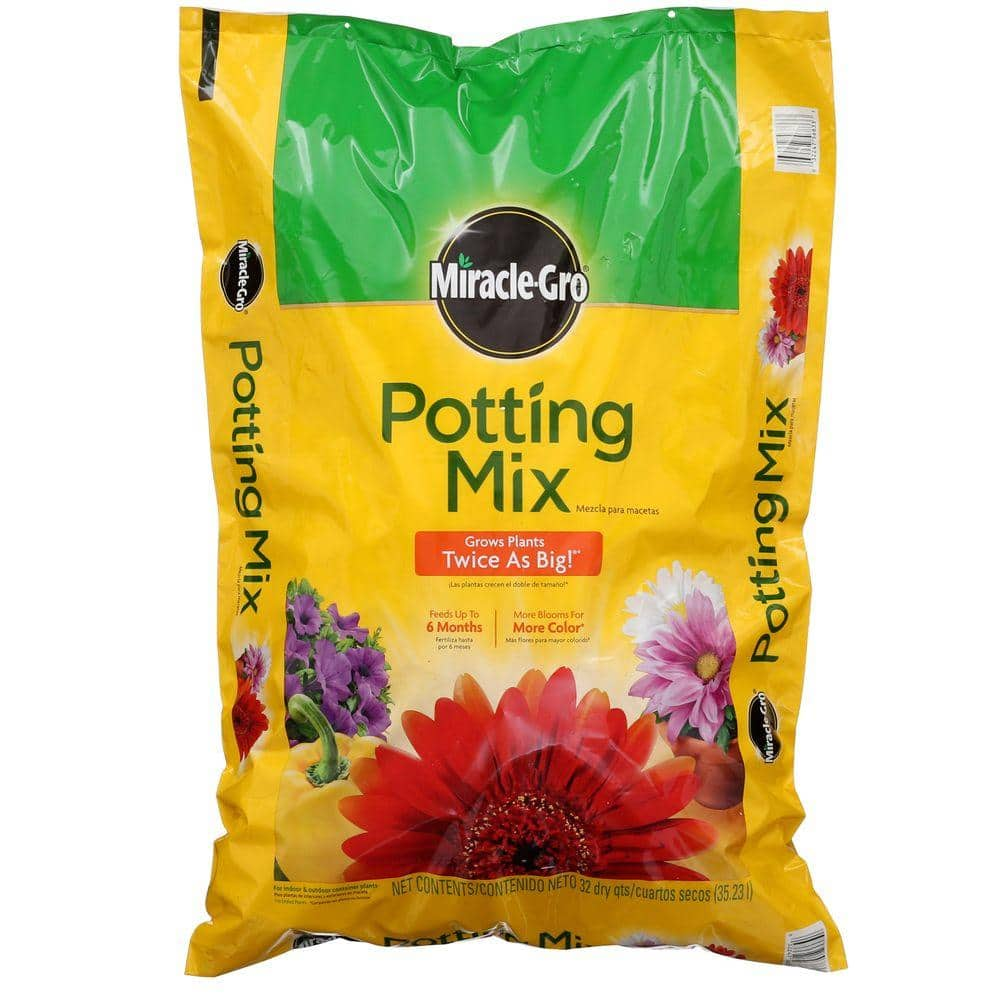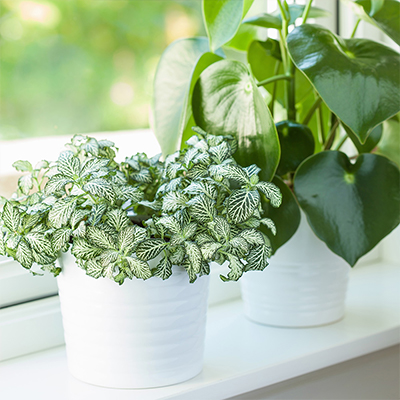Best Succulents for Your Garden

Last updated September 7, 2023
If you’re a gardener without much room or time to care for plants, then succulents are a great choice. These tough little survivors come from parts of the world with dry tropical or semi-tropical climates, like deserts and steppes, and are easy to grow virtually anywhere, as well as in containers. They come in many different varieties.
Table of Contents
An Introduction to Succulents
Choosing Succulents
How to Grow and Care for Succulents
Agave
Echeveria
Hens and Chicks
An Introduction to Succulents

Succulents naturally grow where rainfall is scarce. They store water in their leaves, stems and roots. The word succulent comes from a Latin word that means juice. It refers to their fleshy-looking leaves.
Succulents are hardier than many other plants. Some can even handle moderate rain and snow. Learn more about plant growing zones. Succulents look great along edges of walkways or tucked into spaces in walls where other plants won’t grow.
Choosing Succulents
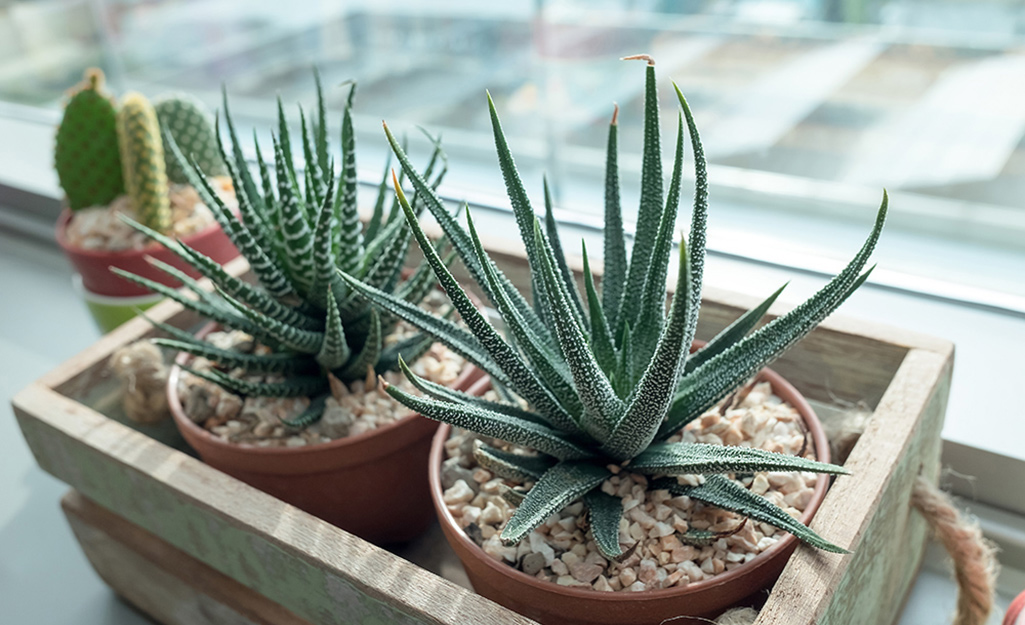
Succulents are ideal for hot, dry landscapes. They can tolerate windy slopes and sunbaked rock gardens. They can even stand up to gusty winds. Some succulent types, like jade plants, must come inside when temperatures drop to freezing.
If you live in a wet climate like the U.S. Northwest, you can still grow succulents outdoors. An easy-to-grow choice for beginners is Oregon stonecrop. The plants spread out forming mats, and blossom with yellow flowers in spring. Also good for the Northwest are tree stonecrop and Palmer’s stonecrop, which grow into small shrubs that resemble jade plants. Planted outdoors, they can tolerate some moisture and shade.
If you live in an area that has snow and long periods of below-freezing temperatures, you’ll need to bring your succulents indoors. Give them a window with a southern or western exposure. In the winter, the succulents will go dormant, so cut back your watering until they start actively growing again. If your plants are close to a window in an unheated room, make sure the temperature doesn’t drop below 35 degrees Fahrenheit. You’ll only need to water when the soil feels dry.
Some of the best succulents for a garden planted outdoors are hens and chicks, dragon’s blood stonecrop, whale's tongue agave, ball cactus and liveforevers.
Use different colors and shapes to make a succulent garden. Succulents come in shades of green, gray, red, purple, yellow and blue. Mix and match upright plants with varieties that arch and spread. Place decorative rocks around them for an eye-catching look.
How to Grow and Care for Succulents
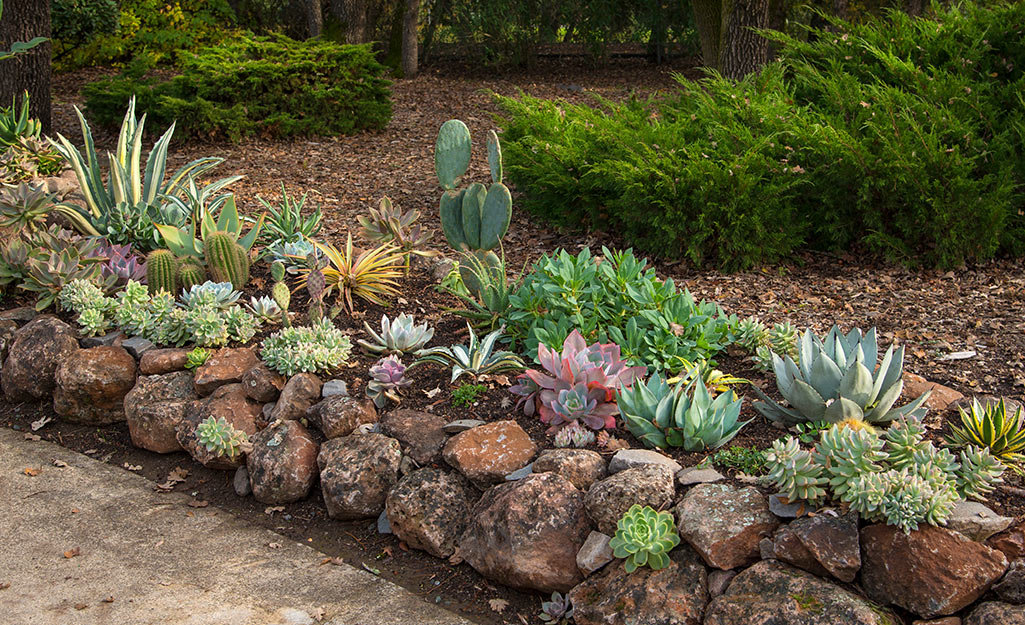
Succulents like dry soil. Depending on the temperature, you may only need to water once a month or every other month. Water the roots, not the leaves. Make sure succulents have excellent drainage in your garden soil or in your containers. Never let water stand around them.
Feed succulents with a half-strength solution of water soluable fertilizer and water them well, but not too often. In general, succulents are hardier than many other perennials. Indoors, find the right spot for them and be consistent with temperatures and humidity. Avoid overwatering, which can lead to rotting.
Give succulents and cacti as much indoor light as possible. A window with direct sunlight is best.
Place succulents anywhere in your home or office, except humid areas such as bathrooms and kitchens. The dry air in most buildings suits succulents perfectly.
Learn more about specific succulent varieties below.
Agave
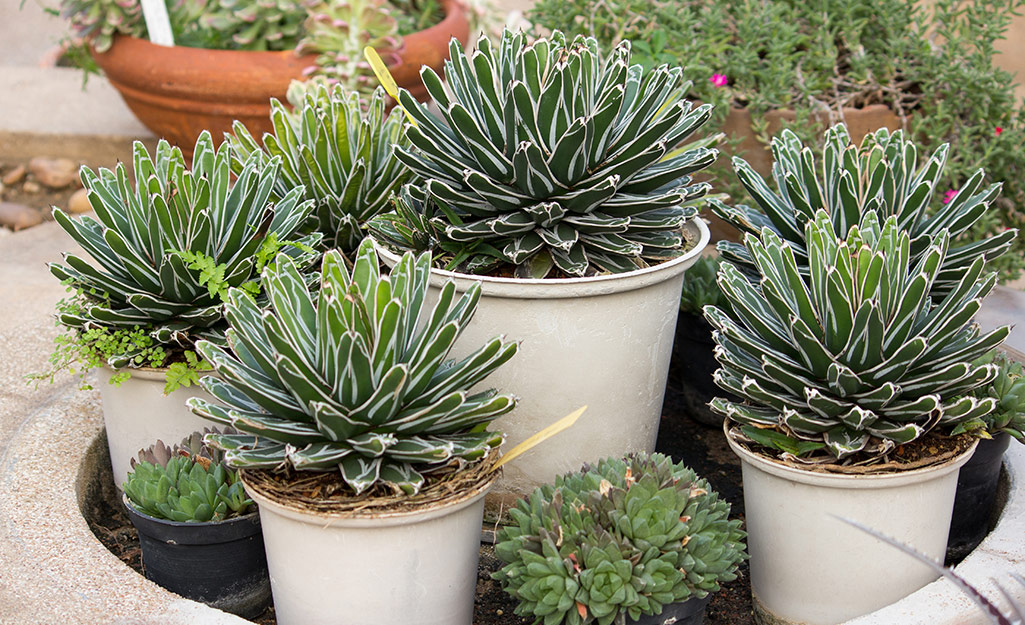
Agave comes in various shapes and colors. You’ll often see these plants as rosettes with spiny, stiff leaves. Others have soft leaves and lack spines. Even though agave can become large, they can thrive in a small pot or outdoor garden space for many years if you manage their size.
Echeveria
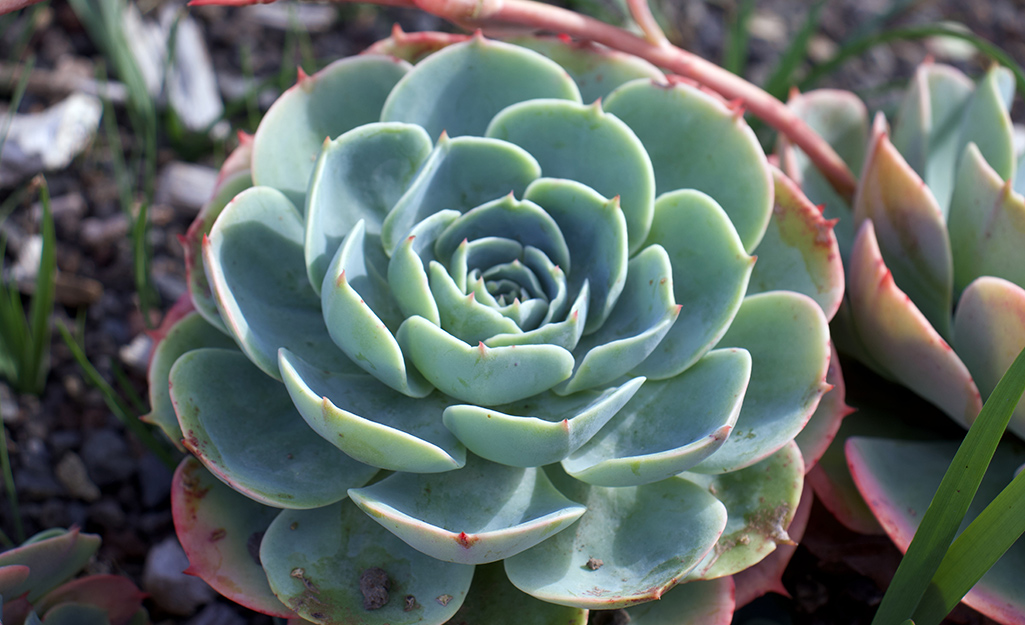
Echeveria are succulents that form rosettes as they mature. Most echeveria are small, but some varieties grow into shrub-like plants. Check the tag on your plant to see how large it will grow if you want to plant it in a dish garden or other container.
Echeveria are some of the best succulents for your garden if you want cool-toned colors like powder blue, green and silver. Some even have attractive red edges or tips that invite pops of warm hues into an otherwise neutral palette.
Hens and Chicks
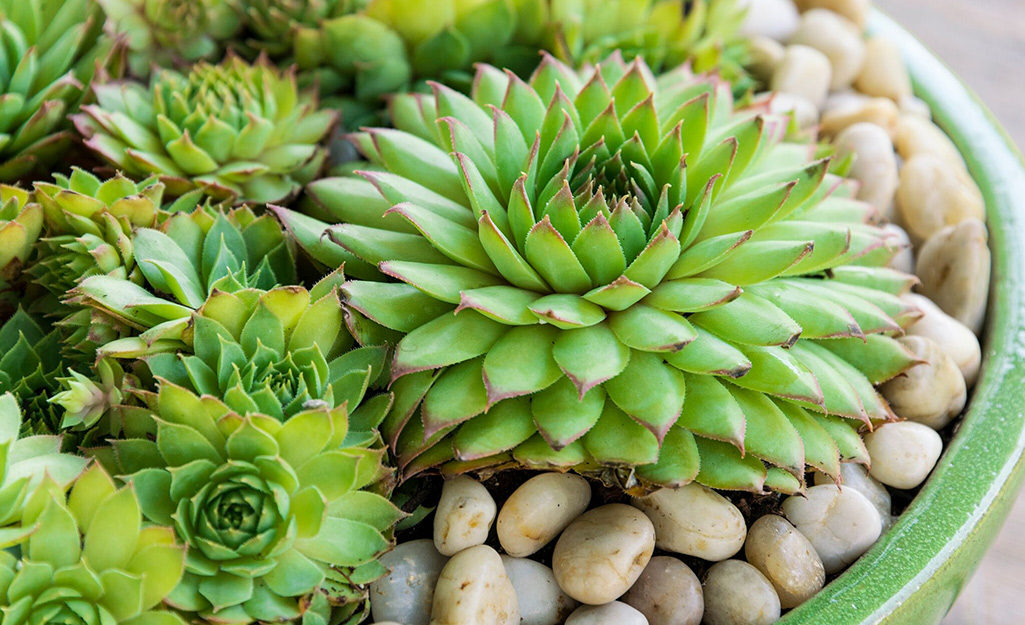
Sempervivum succulents are fondly known as hens and chicks because the plant’s rosettes (mama hens) produce lots of cluster-creating babies (chicks). After they flower, the hens will die, but you can remove them from your garden or pot and have plenty of chicks left to fill in the space. Hens and chicks are drought-tolerant, sun-loving plants.
Try a pre-potted collection for a diverse cluster of dimension and color. A sempervivum bowl contains multiple varieties. These bowls lend colorful charm to your patio or garden, or if you have a particularly sunny spot inside near a window or sliding glass door. Place them in a sunny spot on your patio coffee table or dining table.
Jade
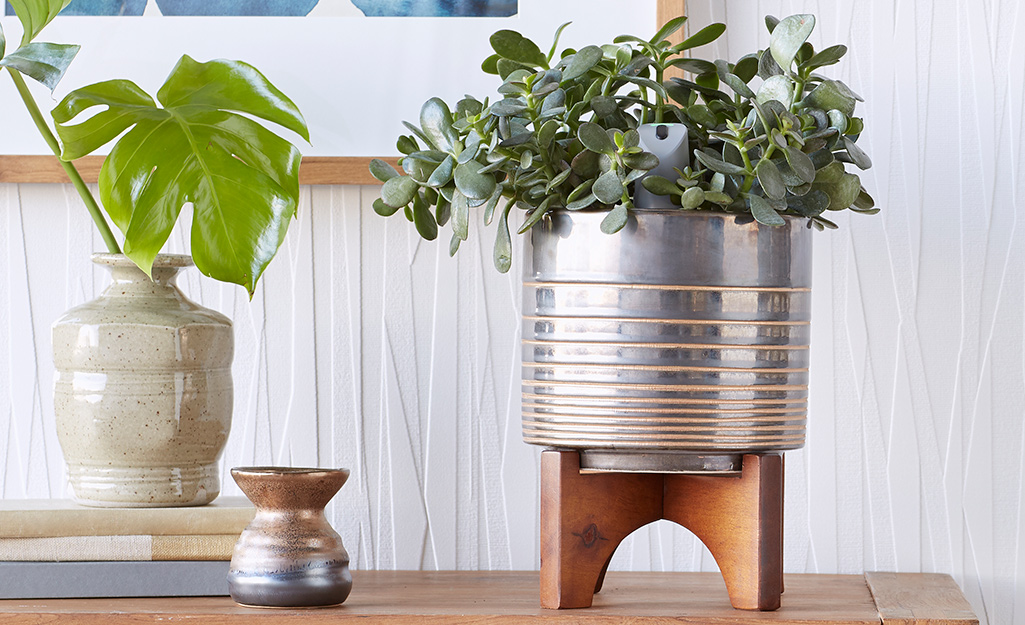
Under the right conditions, your jade plant will bloom in the wintertime. Look for varieties in shades of green and red and give them full sun to keep their colors bright.
Burro's Tail
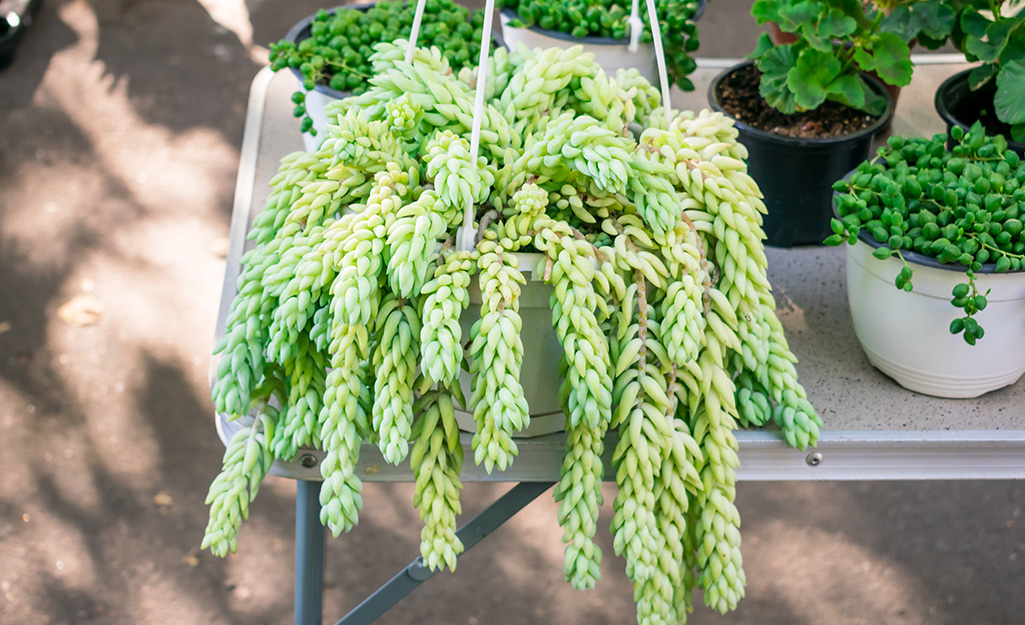
Stonecrops, or Burro's tail, come in two main categories: low-growing and upright. Kalanchoe is a popular upright species known for its thick leaves and brightly colored blossoms. It makes an excellent housewarming gift and is commonly sold as an indoor plant.
Burro’s tail, also known as donkey’s tail or lamb’s tail, is one of the best succulents for your garden containers and hanging baskets. It is a low-growing species with an attractive trailing habit. The gray-green leaves are shaped like teardrops and grow on branches that can reach 2 feet long. Keep them cut back if they're in a small dish garden or container.
Another low-growing species is creeping stonecrop. This mat-forming succulent turns bright red in full sun and in the cold and has bright yellow blossoms.
Try sedum mats for a variety of low-growing stonecrop succulents. Place them on a slope or tile them in a garden bed for an eye-catching display. Visit your local store today to check out our current selection of sedum mat arrangements.
How to Troubleshoot Succulents
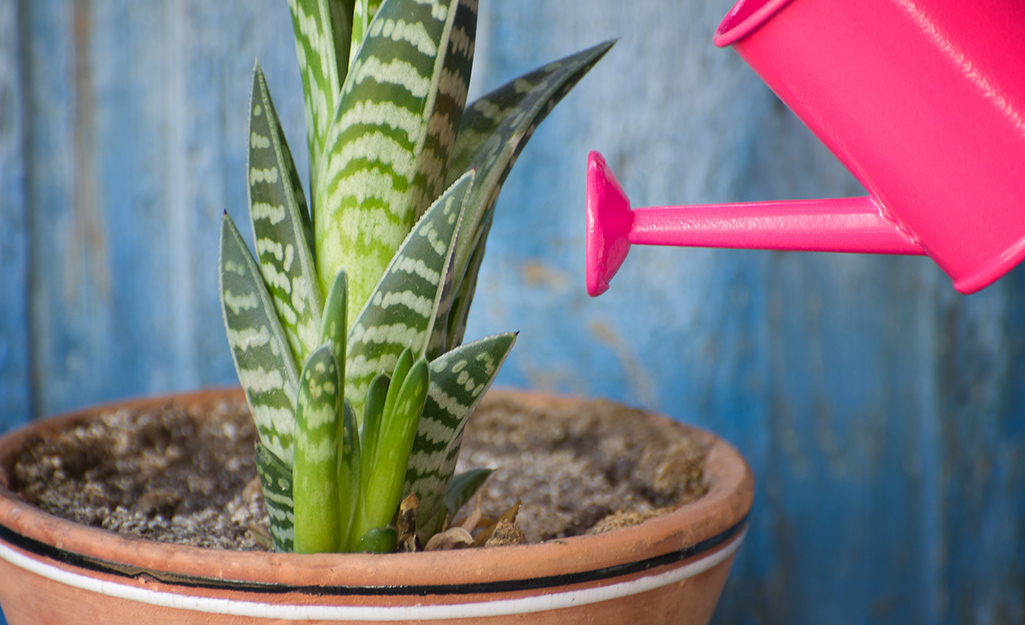
If your succulents stop looking their best, try these tips:
- If you see dead leaves at the bottom of the plant, remove the leaves without disturbing the trunk or roots. Dead leaves at the bottom of succulents are normal.
- If your succulent has dry leaves near the top of the plant it is time to water. It should perk up within one or two watering cycles.
- Yellow, transparent leaves mean you have overwatered
- Black leaves signal that the plant has received too much water and will not survive. Harvest any healthy leaves if you would like to propagate new plants.
- If your succulent has wrinkled, dry leaves, it is under-watered and needs more attention
- Stretched-out or leggy succulents need more light. Move potted succulents closer to a light source and consider transplanting garden succulents into a sunnier spot.
- Even the best succulents for your garden can fall prey to insects. Mealy bugs are a common pest. Fill a spray bottle with 70 percent isopropyl alcohol and spray it on areas of the plant infected with bugs.
Tip: Avoid overwatering by waiting until it's completely dry before watering again.
Use this guide to start exploring the world of succulents. Try them as indoor or outdoor plants. With so much variety, it’s easy to find succulents that are just right for your home or garden. Home Depot delivers orders when and where you need them.
